

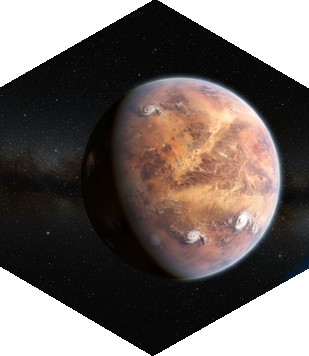
Al-Qamar is the Arabian League’s desert flagship, settled as both a symbol of endurance and a proving ground for advanced water engineering. Its domed oasis cities rise like jewels out of endless sand seas, each sustained by solar-powered condensers and subterranean aquifers. The colony embodies the League’s vision of combining ancient desert traditions with modern survival technologies.

Americana is a desert colony world, notable for its unforgiving sandstorms and severe climate. Despite the hardships, settlers here forged a culture of endurance and discipline, often serving as a training ground for U.S. survival specialists. Though its population is small compared to other colonies, Americana stands as a symbol of American adaptability under harsh frontier conditions.

Anastas is a logistical hub that anchors Russian expansion across interstellar corridors. With sprawling cryogenic storage facilities and advanced agritech farms, the world ensures food preservation and distribution across Russian and allied settlements. Its infrastructure also makes it a staging ground for exploratory ventures deeper into the frontier.
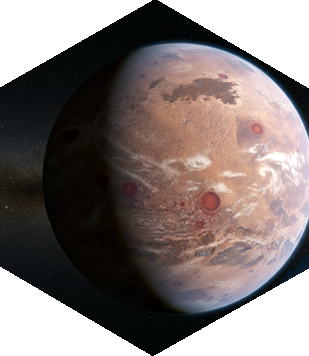
Asagiri is a lunar colony developed primarily for orbital infrastructure and fleet maintenance. Its surface hosts only a modest population, but its orbit bristles with shipyards, drydocks, and depots. The colony functions as the technical heart of Japan’s interstellar defense posture, ensuring its fleets remain supplied and maintained while also exporting engineering services to allies.
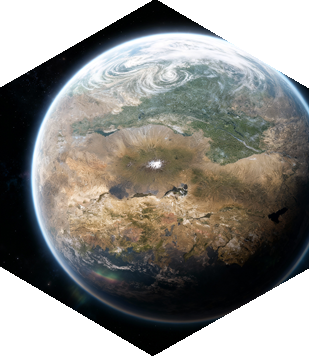
Chandigarh serves as India’s flagship colony, designed as both an administrative and educational center. The cityscapes reflect India’s architectural traditions merged with modern ecological design, emphasizing efficiency, sustainability, and cultural continuity. Its universities and academies have positioned Chandigarh as a hub for interstellar scholarship, nurturing a diaspora that blends Indian values with frontier realities.
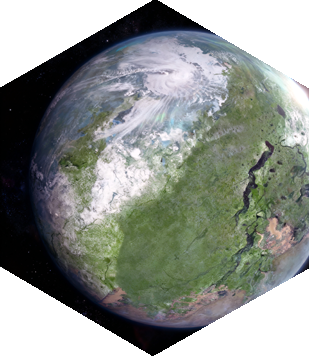
Paired with Americana in the same star system, Commonwealth was designed as a model colony of sustainable society and ecological balance. Its carefully engineered cities and farmland demonstrate American commitment to environmental stewardship, with a focus on circular economies and renewable energy. It has become a reference point for interstellar urban planning and ecological engineering.

Concordia is the cultural conservatory of the European Union’s colonies, devoted to the preservation and expression of European art, music, and history. Its great archives and performance halls attract artists, scholars, and diplomats alike, making it both a repository of memory and a living showcase of cultural vitality. The colony represents Europe’s desire to project soft power and unity through cultural diplomacy.

Birthplace of humanity and the cultural, political, and economic foundation of the Terran Core. Earth remains both a symbol of unity and a hub of competing ideologies — its legacy shaping every colony and polity beyond Sol.
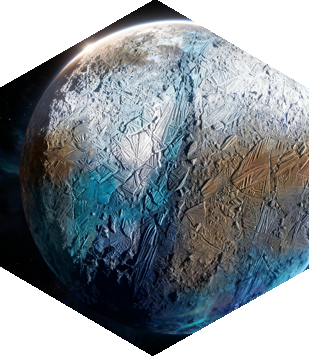
Once a frozen moon, now transformed into an aquatic research and habitation world through extensive engineering. Europa hosts pan-Terran facilities and remains a shared achievement of cooperation among multiple polities.
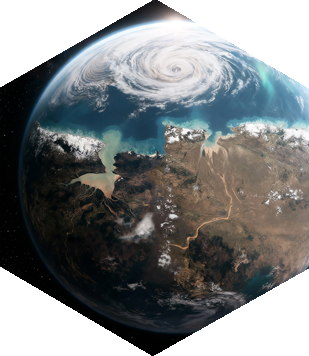
Fenghaung is a sovereign Chinese world, one of the few colonies fully owned outright by the nation. It is a populous, highly developed world serving as both an industrial and cultural hub. Factories, shipyards, and orbital facilities dominate its economic life, while temples, academies, and cultural institutions reinforce its position as a showcase of Chinese civilization in space.
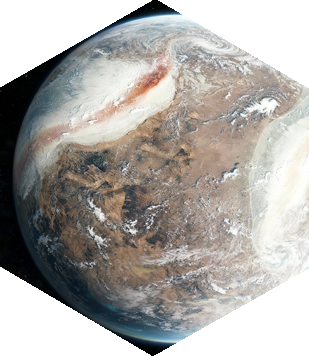
Hallmark began as a frontier settlement and has grown into a vibrant ranching and agricultural colony. Its open plains, seasonal fairs, and frontier spirit make it an enduring symbol of American resilience. Though its population numbers under 200,000, Hallmark’s strong sense of community and pioneering ethos maintain its importance as a cultural and symbolic outpost of U.S. values.

Named for its Earth counterpart, Hamburg is a colony of precision, compactness, and engineering foresight. Specializing in modular, exportable urban systems and circular economies, the world produces sustainable templates that can be applied to other colonies. Its settlements are laboratories for urban problem-solving, exporting everything from waste-to-energy systems to modular architecture.

Hanchan is one of the cornerstone Chinese colonies, designed from the outset as a multipurpose settlement. Its population, numbering in the millions, supports agriculture, mining, and research in equal measure. The colony’s infrastructure reflects Chinese state planning—large industrial zones, carefully tiered agricultural belts, and education centers that serve both local needs and national pride.

Harmony was established as a living syllabus of sustainable urban design and green innovation. Cities are compact, efficient, and integrated with surrounding ecosystems, making the world a model for interstellar education in environmental sciences and social governance. Universities and research centers attract scholars across the Terran Core, while its very landscape is a teaching tool in urban planning and ecological resilience.

Itzamna is a tropical world prone to heavy monsoons and tectonic instability. Settlers learned to thrive in its unpredictable climate by adopting flexible farming techniques and elevated construction. With a name invoking Mesoamerican heritage, Itzamna represents the League’s determination to honor ancestral roots while proving that even unstable worlds can sustain vibrant societies.

Kendiya is a pioneering ecological engineering colony, settled specifically to test methods of restoring marginal and degraded planetary environments. Harsh climates and poor soils forced the colonists to develop advanced techniques in hydroponics, terra-mending, and water reclamation. Today, Kendiya is regarded as a model of planetary rehabilitation, with its ecological expertise exported across Terran colonies.
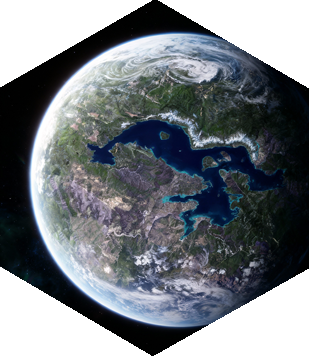
Kunlan functions as a trade and logistics colony, its primary role being to connect Chinese outposts with the rest of the Terran Core. Located near key jump routes, it developed into a waystation world with vast orbital depots, shipping hubs, and relay stations. Although its planetary surface remains lightly settled, its orbital infrastructure and mercantile role are essential to sustaining China’s broader colonial network.

Mandela is a harsh and marginal world, its surface battered by radiation and unstable climates. Colonists here survived by turning inward, developing advanced hydroponics and shielded habitats. Despite adversity, Mandela’s society is built around human-rights ideals, with a culture that treats endurance not merely as a necessity but as a moral triumph. It remains a proud symbol of resistance and perseverance.
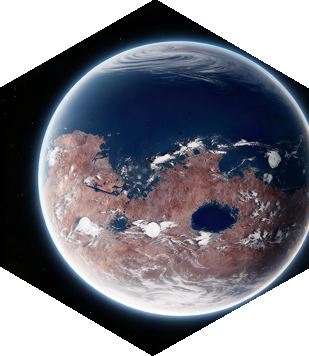
Mars was the first stepping stone for permanent Human habitation off of Earth. Its growth exploded until the colonization of the extrasolar colonies started. Before that, Mars was able to survive economically due to its heavy and expansive industrial base, as well as a leading cluster of corporate headquarters. After the terraforming project was completed, many people stayed. eventually stabilizing the planet's population.

Matsumoto is a compact, carefully engineered colony that thrives within vast subterranean cave networks. These underground city-caves shield its population from radiation and harsh surface conditions, while aboveground cultural gardens and shrines preserve Japanese traditions. The settlement exemplifies Japan’s ability to combine efficiency with cultural continuity, creating a society that feels both ancient and futuristic.
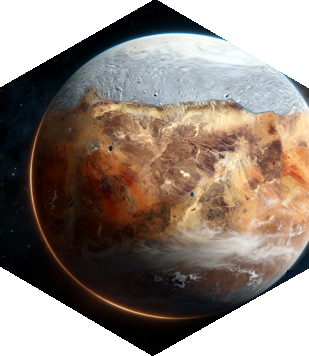
Modjadji is a desert world known for its pioneering water-reclamation technologies and specialized desert agriculture. Named after a legendary rainmaker queen, the colony thrives by pulling moisture from the air and cultivating crops suited to arid environments. Its people embrace ingenuity and resilience, making Modjadji an exporter of survival knowledge across the Terran Core.
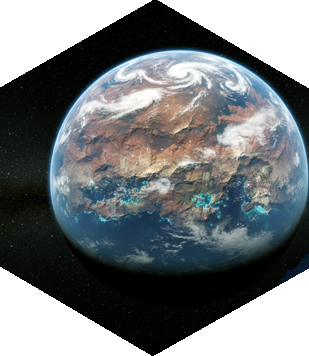
Najran is a tidally locked world where survival depends on building settlements along the narrow twilight belt between burning day and frozen night. Colonists adapted with wind and solar grids, creating a resilient energy infrastructure that sustains their twilight cities. For the Arabian League, Najran represents both hardship and triumph — an outpost of faith and determination in one of the most challenging environments colonized.

New Atlantis, co-owned by China and the European Union, is the largest and most important Sino-European project. With more than 230 million residents, it is both an agricultural and industrial powerhouse. Its governance is split between European and Chinese authorities, creating a rare bi-polity structure that is as much a diplomatic experiment as an economic necessity. For China, New Atlantis is the crown jewel of its interstellar expansion, symbolizing its ability to cooperate at scale while projecting strength abroad.

The primary American extrasolar capital, New Washington, is both a sprawling metropolitan hub and the seat of U.S. interstellar politics. Its surface is dotted with skyscraper arcologies, corporate towers, and the United States Space Force’s command headquarters, making it the keystone of American diplomatic power projection. While advanced industry supports its economy, the world also prides itself on being a beacon of Terran democracy transplanted to the stars.

Pace is the agricultural heartland of the European Union’s interstellar holdings. With its warm climate and fertile landscapes, it has become both a breadbasket world and a cultural showcase of European values. The Soboloski Starport, opera houses, and biodiversity museums emphasize the EU’s dual focus on sustainability and heritage, while its fields supply foodstuffs across the Core.
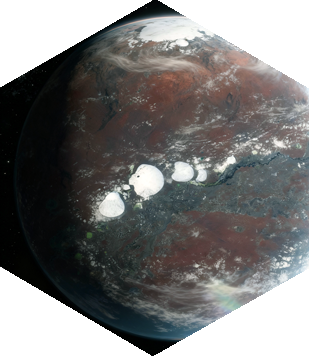
Established in the same system as Hallmark, Pittman serves as a military and research station on a harsher, less habitable body. With inhospitable climates and spartan infrastructure, it supports both the defense of Hallmark and scientific ventures into high-radiation environments. Its presence underscores the American willingness to hold strategic ground even in difficult conditions.
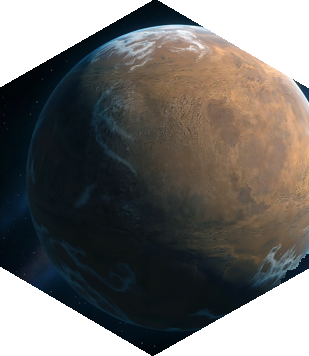
Raqiba is a rocky moon outpost chosen for its strategic location along jump corridors. It was built first as a logistics and surveillance hub, its surface dominated by sensor arrays, relay towers, and orbital depots. Although lightly populated, Raqiba is critical for monitoring traffic through the outer Core, making it as much a watchtower as a colony.
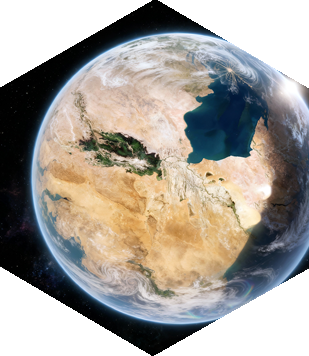
Roosevelt is a distinctly American colony characterized by agrarian and artisanal traditions set against a backdrop of carefully planned settlements. Its culture blends frontier self-reliance with a Victorian sense of civic pride, reflected in its elegant town squares and Concord-style capital architecture. Farming communities thrive here, supplying both food and cultural exports, and the world functions as a counterbalance to the urban sprawl of New Washington.

Sendai is an oceanic world where Japanese settlers built floating arcologies that drift across vast seas. Robotics and automated aquaculture sustain its fisheries, while its arcologies provide high-density, high-tech housing that maximizes efficiency in limited space. The colony blends Japan’s maritime traditions with cutting-edge robotics, making it both a food producer and a model of oceanic urbanism.

Sucre is a rocky, marginal world that sustains itself through mining cooperatives and small-scale industry. Though harsh and resource-poor, its people are celebrated for their vibrant festivals, music, and community solidarity. The colony demonstrates the League’s ability to find strength in hardship, creating a culture where material abundance is scarce but spirit thrives.
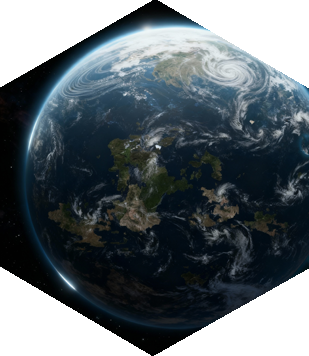
Terra Secundus hosts enclaves from nearly every major Terran power. The U.S. maintains New Liberty, a diplomatic and military hub serving as both the planetary capital and host to the United Nations’ interstellar headquarters. European, Chinese, Indian, and Russian enclaves add their own layers of culture and industry, making Terra Secundus a living experiment in shared governance and cooperation among Terran civilizations.

Trjava is an industrial frontier world where vast mineral reserves are extracted through large-scale operations. Settled by communal brigades, the colony reflects Russia’s tradition of collective labor and resource-driven expansion. Though winters are brutal and terrain rugged, Trjava thrives as a major supplier of raw materials to the wider Terran Core.

Tupac is a volcanic world settled for its fertile valleys and abundant geothermal energy. Colonists carved their lives into the slopes of volcanic ridges, channeling heat into power plants and using rich soils for communal agriculture. The colony’s culture emphasizes resilience, drawing from Andean and Mesoamerican traditions to forge a strong sense of communal identity and pride.

Udachi is renowned for its underground cities, carved deep into the planet’s crust to shield inhabitants from an unstable climate. These subterranean settlements showcase Russian engineering mastery, forming entire urban landscapes beneath the surface. Life on Udachi is tightly communal, with guilds and mining cooperatives forming the backbone of its society.

Umoja is the flagship world of the Pan-African Union — built as a symbol of continental unity and collective strength. Its subterranean arcologies, engineered to withstand severe surface conditions, are masterpieces of ecological design. Governance is communal and council-based, reflecting the traditions of Africa’s federations while adapting them to the interstellar frontier. Umoja stands as both a technological triumph and a cultural beacon of shared destiny.

After huge investments, the span of decades. and a whole-hearted vision of a "Green Venus': these efforts proved fruitful. For pioneers who did not want to travel past the solar system, Venus became a popular in-system location, surpassing Mars due to the favorable gravity attributes.